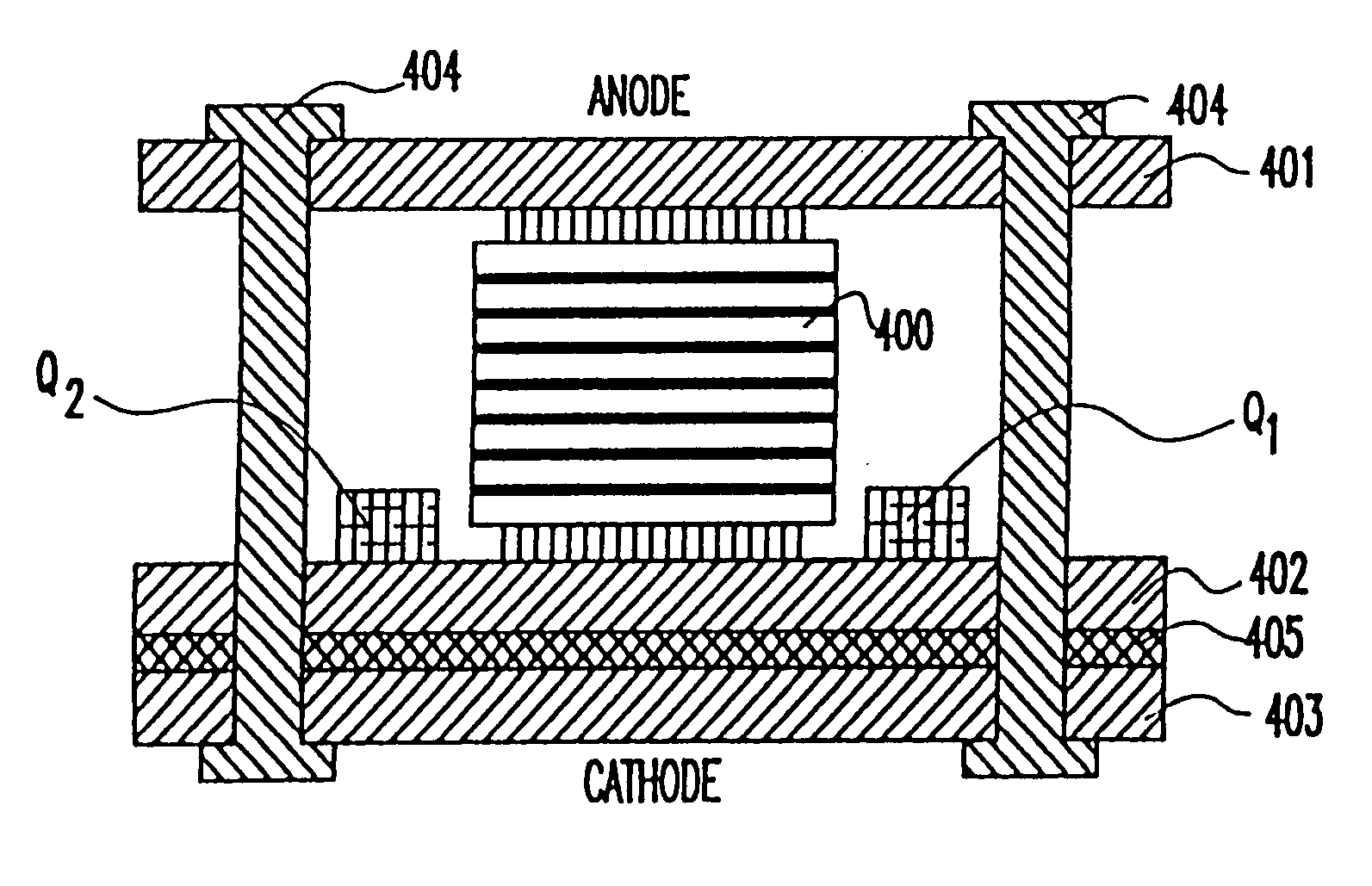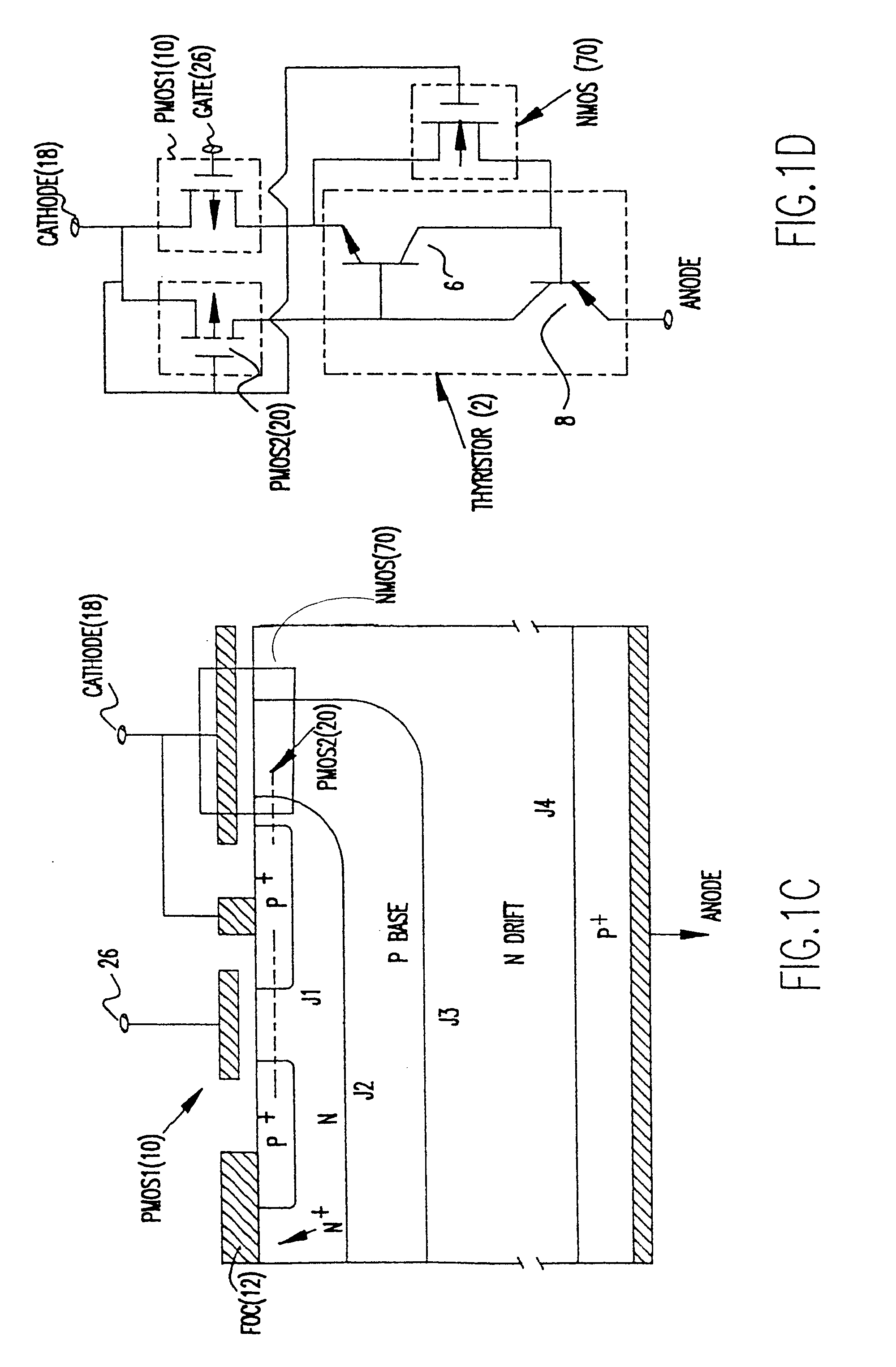Emitter turn-off thyristors (ETO)
- Summary
- Abstract
- Description
- Claims
- Application Information
AI Technical Summary
Benefits of technology
Problems solved by technology
Method used
Image
Examples
Embodiment Construction
[0035]Referring now to the drawings, and more particularly to FIGS. 1A and 1B, there is shown a cross-sectional view of the emitter controlled thyristor (ECT) and its equivalent circuit, respectively. The ECT has a four-layer PNPN thyristor structure 2, in series with a P channel MOSFET (PMOS1) 10 integrated on the top N layer. In FIG. 1B the PNPN thyristor is shown as a PNP bipolar transistor 6 and NPN bipolar transistor 8. A Floating Ohmic Contact (FOC) 12 shorting the N emitter 14 and the P+ region 16 which acts as the source of the PMOS110. The FOC 12 provides the bridge for transferring emitter electron currents of the upper NPN transistor into hole currents, which then flow through the PMOS110 channel and into the cathode contact 18. A second PMOSFET (PMOS2) 20 is formed at the other side of the cathode contact with the upper P base 22 acting as the source. The PMOS2 does not have a separate control gate, instead, its gate 24 is tied to the cathode contact 18.
[0036]During the ...
PUM
 Login to View More
Login to View More Abstract
Description
Claims
Application Information
 Login to View More
Login to View More - R&D
- Intellectual Property
- Life Sciences
- Materials
- Tech Scout
- Unparalleled Data Quality
- Higher Quality Content
- 60% Fewer Hallucinations
Browse by: Latest US Patents, China's latest patents, Technical Efficacy Thesaurus, Application Domain, Technology Topic, Popular Technical Reports.
© 2025 PatSnap. All rights reserved.Legal|Privacy policy|Modern Slavery Act Transparency Statement|Sitemap|About US| Contact US: help@patsnap.com



